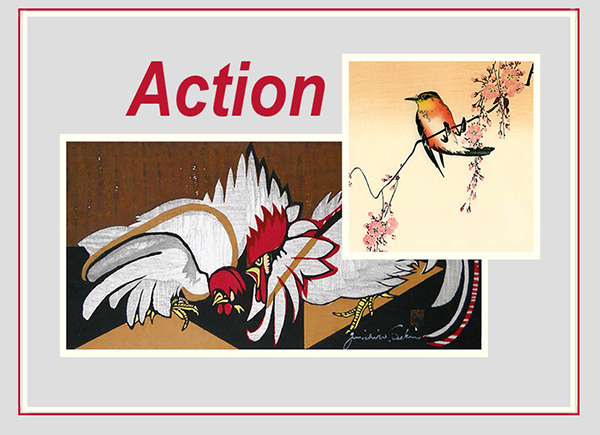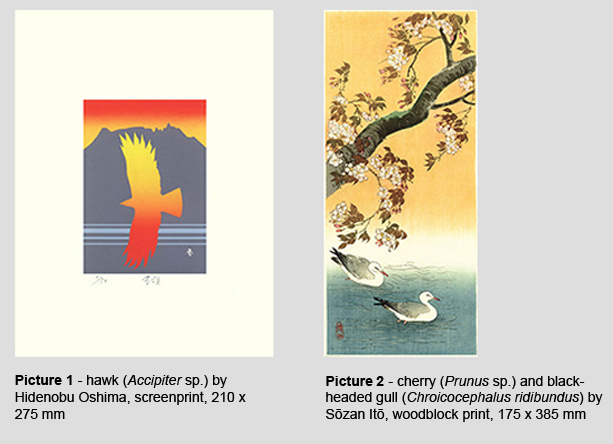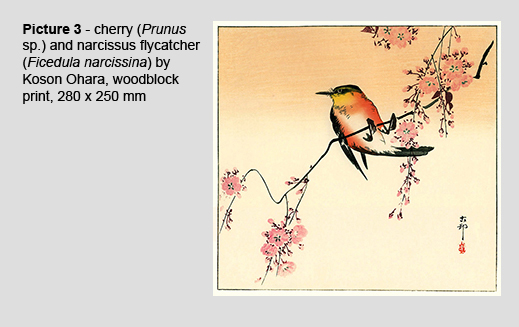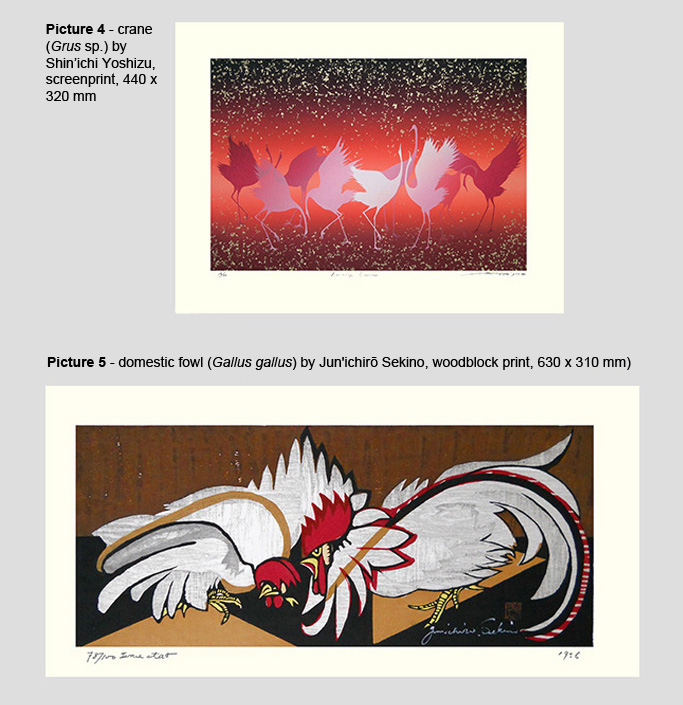Reader Collection > Blog > Action |
||
 |
||
Action attracts our attention whether we witness it live or in a picture. While a picture only shows a single moment in time an artist can suggest action in one of three ways: (1) active pose (i.e., posing an object to show that it is moving), (2) unstable pose (i.e., placing an object in an unstable position to imply that its movement is imminent), (3) repetition (i.e., including more than one object to suggest that the objects are interacting). Many Japanese artists who drew pictures of flowers-and-birds enlivened their pictures by suggesting action using one or more of these three methods. Some examples are shown below, chosen from the Reader Collection of Japanese Flower-and-Bird Art. |
||
 |
||
Unstable Pose |
||
 |
||
Repetition |
||
 |
||